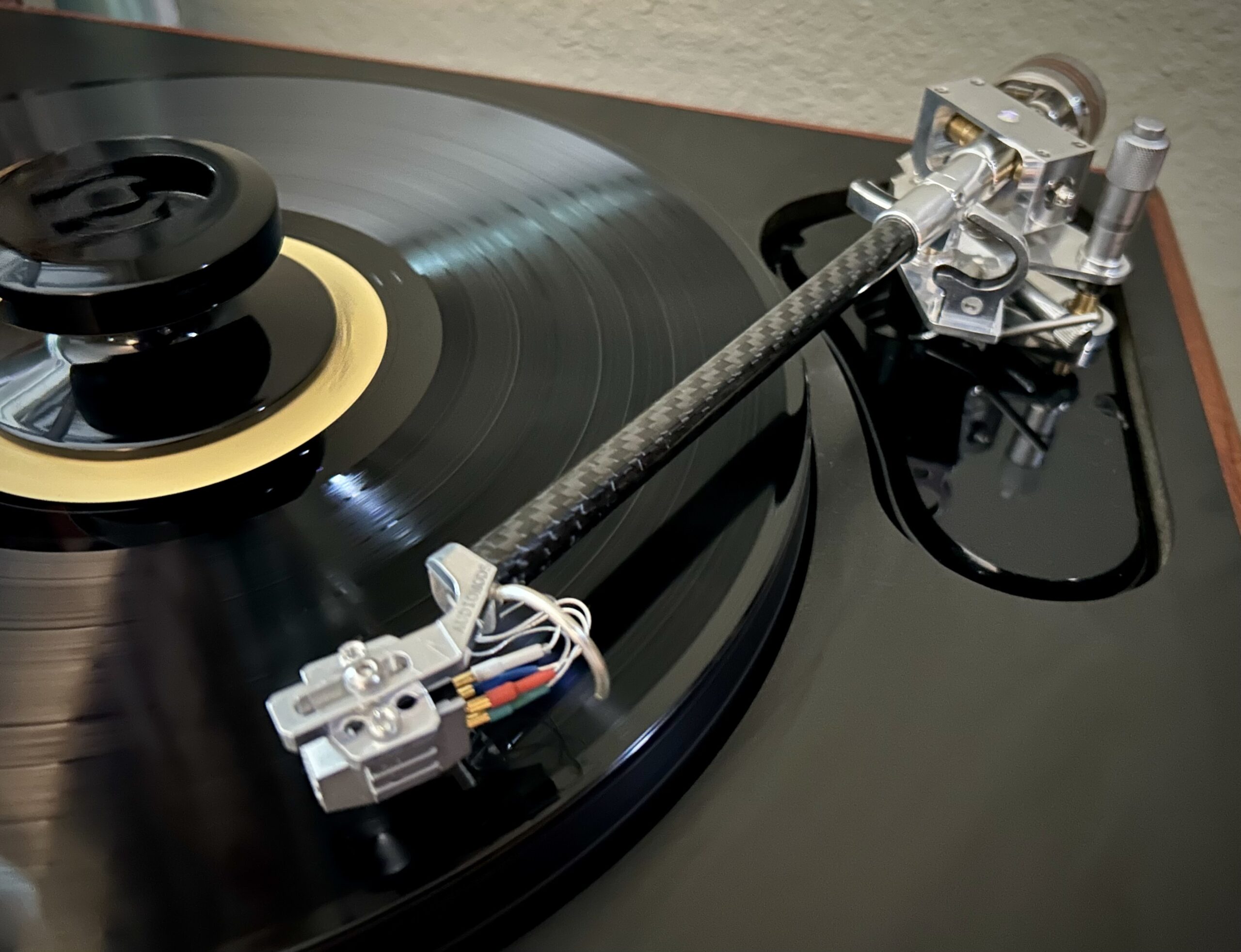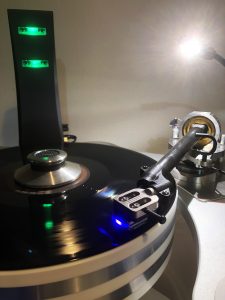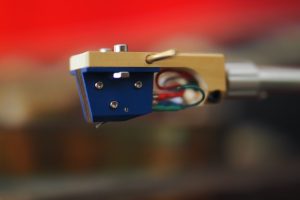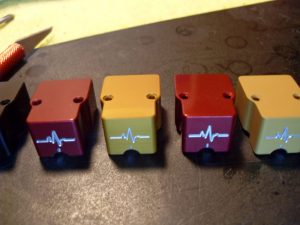Several years ago I had the pleasure of an extended visit of the Ortofon Cadenza Bronze in my system. The Bronze is a remarkable cartridge in every facet, and it was with no small regret when my acquaintance with it ended. Then Last year Ortofon USA was kind enough to send the Quintet Bronze my way, and it was also a gem, and a very affordable one at that. When the opportunity came along to review the Cadenza Red I certainly looked forward to this review, although I have to say that I had a couple of reservations on how this would all turn out. You see, the Quintet series cartridges represents a solid value to the cost conscious hobbyist, while the Cadenza Bronze is an offering of exotic high end performance that discerning analog audiophiles clamor for. The question a perspective owner might ask; "Is the Cadenza Red worth the extra $450 over the Quintet Bronze? Or can it hope to portray the magic of the Cadenza Bronze since it is a $1000+ less expensive?" With a price tag of $1280 the Cadenza Red resides firmly in the first tier of high performance moving coil cartridges, and the competition in the market place at this level is quite fierce. So it was with no small curiosity that I took on the Cadenza Red review, as I had to know if this cartridge has the inner fortitude to elbow its way into a completive niche.
The origin of the Cadenza Red cartridge is an interesting topic, as it has its architecture based on the Kontrapunkt A cartridge, which had an extremely successful run in the market place. While there may be design characteristics based on the Kontrapunkt A, it would be a mistake to consider the Cadenza Red to be just an updated version of an earlier design. The Red contains 6NX (99.9999% pure) silver wiring, and an improved coil winding process on the armature which improves channel balance and separation. Other updates include cobalt-iron pole pieces, and a newly designed body built from a combination of extruded aluminum and portions of stainless steel. The cantilever is a straight pole aluminum design, which is fitted with Ortofon's nude mount Fine Line diamond. This is a line contact variant, with the diamond having a radius of 8 by 40 μm. The Red has some heft to it, coming in at a stout 10.7 grams. This is a medium compliance cartridge, as it measures 12 μm/mN dynamic compliance, and has an output level of .45 mV. Tracking force range is 2.2-2.7 grams, with the recommended setting being 2.5 grams.
Since I used an updated Thorens TD124 with a 4" stacked birch plywood plinth and Eminent Technology II tone arm for the Quintet Bronze review, I thought it would be appropriate to evaluate the Cadenza Red on the same table. Tracking force was set at 2.5 grams. While I experimented in the published force range, I ended up returning to the setting recommended by Ortofon. The phono stage used for this review is the Liberty Audio B2B-1, which I configured for a 220 ohm load for this cartridge. An Electra Print PVA pre-amplifier and 300B Custom amplifier drove a pair of Hawthorne Audio Trio speakers. Power conditioning duties were handled by an Audio Magic Mini-Reference, and all cabling came from the Zu Audio Mission series of wire.
Which adage defines the audio world for most of us? "You get what you pay for." Or "A fool and his money are soon parted." When talking with folks over the years it seems to be the later more often than the former, and that is a troubling circumstance for our hobby. Now in the case of the Ortofon Cadenza Red, I can tell you without a doubt that you are getting what you pay for, of that I am 100% certain. My first impression of the Cadenza Red is this cartridge has an astonishingly natural portrayal of the midrange, and this sole characteristic would make it worth owning. While I have a soft spot for the Quintet Bronze, there is absolutely no comparison between the two cartridges, as the Cadenza Red handedly outclasses it in this area. I often play Solid Colors by Liz Story when making a critical examination of analog equipment, as this album has an exquisite combination of tone, transparency, subtle detail, and harmonic expression. A favorite track is "Without You" [Solid Colors; Windham Hill Records C-1023] as the melody is languid and easy flowing, yet the underlying chords hang on and resolve in such a beguiling manner. The Cadenza Red brings all this beauty of Story's playing to the fore front, and it is immediately apparent that this cartridge is something special, as it gets to the core of the performance in a way lesser cartridges cannot delve to. The notes flow in such an unhurried pace, yet the sound is so transparent that the jazz infused undertones are easily appreciated. The piano has a body and fullness that gives the music substance, and the tone of the piano is rich and vibrant without being overdone. There is indeed a separation between good and great moving coil cartridges, and the Cadenza Red is certainly in the field where the excellent ones reside in.
The Cadenza Red is equally adept at presenting the magic of the great vocalists in the world of music. Mel Torme released "It's A Blue World" in 1955, while he was at the zenith of his abilities. The mastering of this record is from a bygone era, yet there is no way the limitations of the recording can diminish the greatness of Torme's voice. Sure the orchestra is a bit smooth and languid on "Found A Million Dollar Baby" [It's A Blue World; Bethlehem BCP34], yet the Cadenza Red pulls the veils back on the vocals, and all the refinement and delicacy of one of the greatest contemporary singers of our time is on display. Every inflection and intonation are at the forefront of the recording, laid out for the listener to partake of in an unhurried manner. The Cadenza Red is never a cartridge that is in a hurry so to speak, as it encourages a person to experience every facet of an album, and enjoy it on many different levels. Torme's vocals have all the magic he has to invest in them, and even the orchestra has a graceful presence underneath that lush recording technique. The more time I spent with the Cadenza Red, my appreciation increased for its ability to present music in an introspective and contemplative manner, which is not a characteristic of many modern cartridge designs these days. As many moving coil cartridges seem to mirror the analytical nature of modern digital recordings, and somehow lose the stately presence which a well done analog recording has.
For many hobbyists rock and roll can make up a significant portion of our vinyl collection. Music with a raw edge, large scale dynamic slam, and a metallic edge is something that we are drawn to, even though we are a bit older and are tastes are supposedly more refined. Yet when that need to rock out with our systems manifests itself, it's great to have a cartridge that can snarl and shred with that edgy music. "Wild Women of Wango" [Outside Inside; Capitol Records ST-12260] by The Tubes happens to be rough, dynamic, yet is still a properly executed recording. The Cadenza Red shows it is more than capable of playing this type of music, and that it can cast aside its easy going nature and get a bit primitive and raw with rock and roll. The bongos and bass guitar are clean and solid, with no bloat or overhang. Electric guitars and crash cymbals are brash, metallic, and have real bite to the notes. Vocals have a bit or rasp to them, but are surprisingly lively and refined, which is an attribute that higher quality cartridges will exhibit on this song. The even keeled midrange presentation that Cadenza Red has is also a strength with good rock and roll music, as it strips away any excessive colorations and shows the energy and drive that defines this genre of music.
As fine a cartridge as the Cadenza Red is, this cartridge does have a distinct personality that may or may not appeal to a person. Ortofon voiced every cartridge in the Cadenza line to be slightly different, and listners or systems may have an affinity for one version above the others. The Red is intended to be liquid, refined, flowing, with a slightly burnished warmth that is easy to get hooked on. Now this cartridge is also the least expensive offering in the Cadenza line, and that means that the engineering team had to forgo adding some of their high tech elements that are available on the Bronze/Black variants. From my perspective, I find the Cadenza Red reminiscent of the Bronze in a few ways, which is high praise for how well it performs. However the Bronze has an advantage with the Field Stabilizing Element that Ortofon has recently designed. The FSE not only extends the high frequency response of the Bronze over the Red, and it improves the linearity of the cartridge in this area. So in those hairpin corners of high frequency material in a record, the Cadenza Bronze just pulls away from the Red. Which is how it should be, considering that there is a $1000 difference in price between the two cartridges. Yet the Cadenza Red is no slouch, and this relaxed high frequency response curve has its own endearing attributes.
For instance, when listening to "Why Worry" by Dire Straits [Brothers In Arms; Warner Bros. Records 25264-1] the higher registers do not have that crystal clear see through element that many top flight moving coils possess these days. Instead the Red's personality in the upper registers is infused with texture, dense harmonic structure, and an overall tone that is just right. On this song the synthesizer notes indeed shimmer, but not with that ethereal clarity of the ZYX 4D, which is my personal reference cartridge. The steel guitar notes decay beautifully, but seems to fade away just a tad earlier than they should. The ambience of the room is slightly diminished, and not as readily apparent. Yet in spite of these characteristics, the top end is sweet, inviting, and has a natural feel that is so easy to listen to. In some ways the Cadenza Red invokes the finest attributes of the most desired moving magnet cartridges ever produced, and blends them with the strengths that a well-executed moving coil cartridge is known to possess. While that seems unusual, this indeed does describe what I hear from the Cadenza Red. Basically, a synthesis of the detail of a moving coil cartridge infused with the coherence of a classic moving magnet design.
At what point does the balance tip on the fulcrum of cartridge performance and affordability? My personal experience says it is at the $1000 to $1200 mark. Cartridges that cost a thousand dollars or more are supposed to sound great. Although for many people it is a significant investment of their audio resources, and many are hesitant to spend that amount of money. Yet as you climb from $200 to $500, or even $800 the jump in sound quality at each stage is substantial. The Ortofon Cadenza Red continues down that path of performance gains, and returns a significant improvement for the money invested. Ortofon has fitted this cartridge with a wide array of quality parts, from the aluminum and stainless steel body, to silver wire coils, a newly designed armature, the cobalt-iron pole pieces, and their Fine Line stylus. Still a cartridge is more than the sum of their parts, and a build sheet of exotic materials does not guarantee an excellent product. The design team at Ortofon has done a splendid job voicing the Cadenza Red, and creating a cartridge that is inviting and easy to listen to, yet capable of presenting the entire palette of shading and texture that may be captured in a recording. This cartridge is a wonderful find for those hobbyists who value an emotionally involving listening experience, where the highlights are tone, harmonic density, and a rich presentation. When you look at the fierce battles that are waged in the $1200 cartridge weight class, the Cadenza Red is right there at the front of the pack, and worth every dollar of its selling price.
Ortofon Cadenza Red
Retail: $1280
Ortofon








































